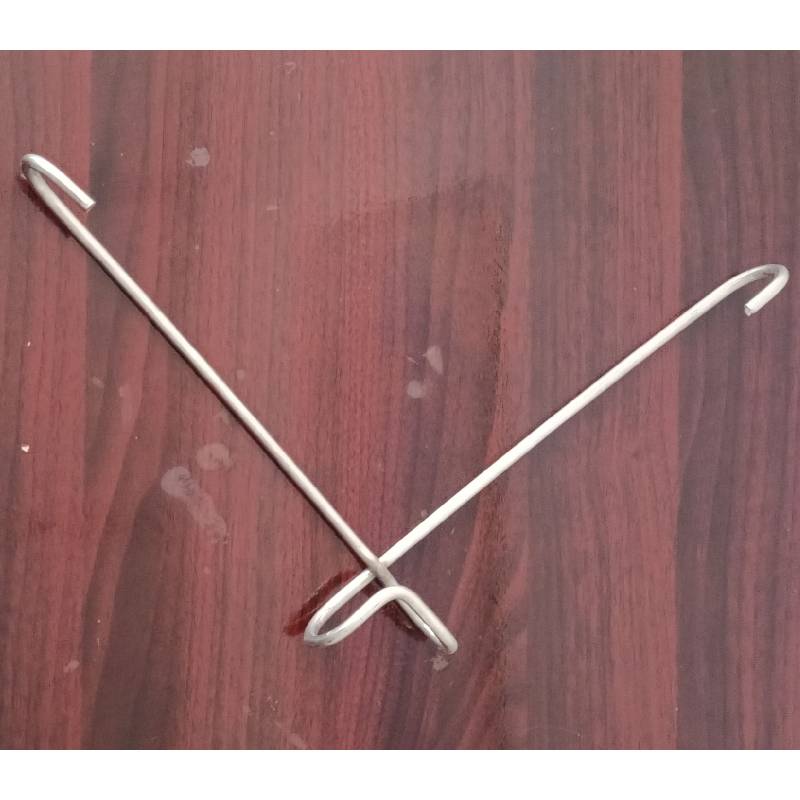
- Mobile Phone
- +8613931874955
- sales@cntcmetal.com
فبراير . 16, 2025 01:58
Back to list
Hexagonal Wire Netting
The realm of construction and fencing has evolved significantly, with galvanized iron (GI) chicken wire mesh emerging as a staple for both professional builders and DIY enthusiasts. The price dynamics of GI chicken wire mesh are influenced by several factors, all of which come into play when making an informed purchasing decision. This article provides a comprehensive guide to understanding these factors and their implications for cost-effectiveness and quality in various applications.
Economic conditions and market trends have a profound impact on GI chicken wire mesh pricing. Fluctuations in the global steel market, particularly in the price of iron ore and zinc, influence the raw material costs. Economic policies, import tariffs, and trade agreements can further cause price variations. Staying informed about these macroeconomic factors can aid businesses and consumers in timing their purchases strategically, capitalizing on periods of lower pricing to optimize budget allocation. Local Supplier Considerations vs. Global Imports While considering price, it’s essential to weigh the benefits of local suppliers against the potential cost advantages of imported goods. Local suppliers may offer higher pricing due to logistical and manufacturing overheads but provide advantages such as faster delivery times and better post-purchase support. Imported meshes might offer cost savings but could incur longer lead times and potential customs complications. Evaluating the total cost of ownership, including shipping, handling, and support, is crucial in making an economically sound decision. Applications Tailoring Solutions to Needs The intended application of GI chicken wire mesh significantly influences the purchasing criteria. For professionals in agriculture, construction, or landscaping, functionality often takes precedence over cost, with investments geared towards meeting strict regulatory standards and performance expectations. Conversely, hobbyists or homeowners might prioritize cost-saving measures, focusing on lightweight solutions for personal projects. Understanding the nuanced requirements of each application allows for the selection of appropriately priced products, ensuring project success without unnecessary expenditure. Sustainability The Future of Building Materials As sustainability gains prominence, the environmental impact of GI chicken wire mesh is becoming a consideration for cost evaluation. Investing in high-quality, durable galvanized iron meshes not only reduces the frequency of replacements but also lessens environmental impact by minimizing waste. Additionally, manufacturers adopting eco-friendly production processes might offer higher-priced products, reflecting the premium on sustainability. Discerning buyers can leverage these options to meet both environmental goals and budget constraints, aligning with broader sustainability initiatives. In conclusion, determining the price of GI chicken wire mesh involves a blend of quality assessment, market insights, and application-specific needs. By focusing on factors such as gauge thickness, mesh size, market trends, and sustainable practices, buyers can ensure they select products that offer true value, balancing quality with cost-effectiveness in a rapidly evolving market landscape.


Economic conditions and market trends have a profound impact on GI chicken wire mesh pricing. Fluctuations in the global steel market, particularly in the price of iron ore and zinc, influence the raw material costs. Economic policies, import tariffs, and trade agreements can further cause price variations. Staying informed about these macroeconomic factors can aid businesses and consumers in timing their purchases strategically, capitalizing on periods of lower pricing to optimize budget allocation. Local Supplier Considerations vs. Global Imports While considering price, it’s essential to weigh the benefits of local suppliers against the potential cost advantages of imported goods. Local suppliers may offer higher pricing due to logistical and manufacturing overheads but provide advantages such as faster delivery times and better post-purchase support. Imported meshes might offer cost savings but could incur longer lead times and potential customs complications. Evaluating the total cost of ownership, including shipping, handling, and support, is crucial in making an economically sound decision. Applications Tailoring Solutions to Needs The intended application of GI chicken wire mesh significantly influences the purchasing criteria. For professionals in agriculture, construction, or landscaping, functionality often takes precedence over cost, with investments geared towards meeting strict regulatory standards and performance expectations. Conversely, hobbyists or homeowners might prioritize cost-saving measures, focusing on lightweight solutions for personal projects. Understanding the nuanced requirements of each application allows for the selection of appropriately priced products, ensuring project success without unnecessary expenditure. Sustainability The Future of Building Materials As sustainability gains prominence, the environmental impact of GI chicken wire mesh is becoming a consideration for cost evaluation. Investing in high-quality, durable galvanized iron meshes not only reduces the frequency of replacements but also lessens environmental impact by minimizing waste. Additionally, manufacturers adopting eco-friendly production processes might offer higher-priced products, reflecting the premium on sustainability. Discerning buyers can leverage these options to meet both environmental goals and budget constraints, aligning with broader sustainability initiatives. In conclusion, determining the price of GI chicken wire mesh involves a blend of quality assessment, market insights, and application-specific needs. By focusing on factors such as gauge thickness, mesh size, market trends, and sustainable practices, buyers can ensure they select products that offer true value, balancing quality with cost-effectiveness in a rapidly evolving market landscape.
share:
Next:
Latest news
-
Wall Ties for Concrete: Invisible Guardians of Building Structural StabilityNewsAug.08,2025
-
Timber Frame Wall Ties: Stable Bonds for Load TransmissionNewsAug.08,2025
-
Stainless Steel Woven Wire Mesh: A versatile material from boundary protection to functional supportNewsAug.08,2025
-
Powder Coat Coil Springs: Creating peace of mind and reliability with sturdy protectionNewsAug.08,2025
-
Floor Standing Sign Holder: A Powerful Assistant for Flexible DisplayNewsAug.08,2025
-
Binding Iron Wire: An Invisible Bond for Building StabilityNewsAug.08,2025
-
Yard Sign Stakes: Reliable Guardians of Outdoor SignsNewsAug.04,2025



















